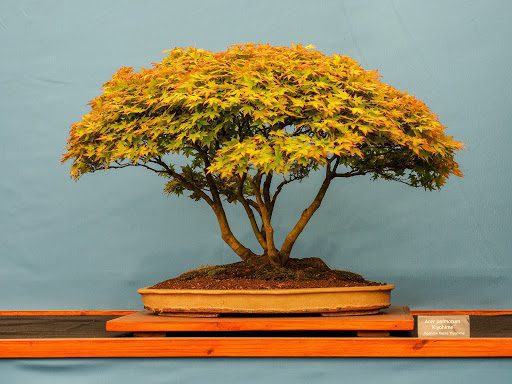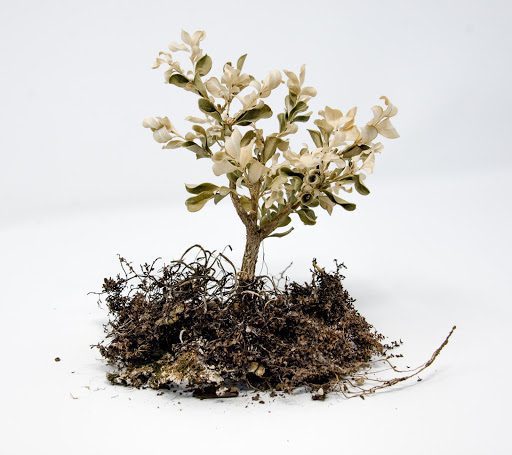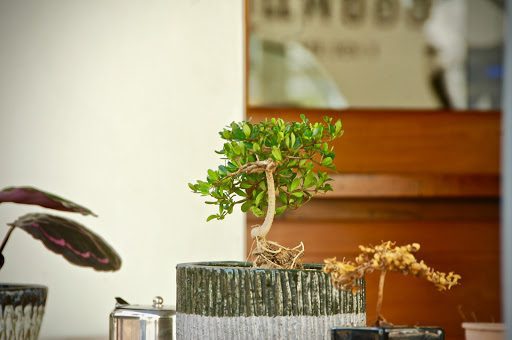Caring for a bonsai is a rewarding hobby, but it can be alarming and frustrating when your tree struggles. Unfortunately, figuring out exactly what’s gone wrong can challenge novice and skilled growers alike. Take a look at these common bonsai tree problems!
You might notice the following symptoms:
- Yellowing or discolored leaves
- Brittle and dying leaves
- Bonsai tree leaves falling off out of season
- Wilted leaves, stems, and branches
You may wonder, “Is my bonsai tree dying?” Don’t worry: once you correct the issue, these hardy companions often bounce right back.
The tricky part? Different ailments can cause similar symptoms. This means it can be hard to distinguish the culprit simply by looking at your plant. Understanding proper bonsai tree care can help you examine your methods and correct your approach.

Over-watering/Under-watering
Your tree survives by absorbing water through its roots. Letting its soil dry up for too long will cause it to die of thirst. On the other hand, overeager caretakers can suffocate their trees with too much water. (Roots need air too!)
There’s no set timeline for watering a bonsai tree. In fact, sticking to a strict watering schedule is a one-way ticket to bonsai tree problems. Instead, examine your soil before watering. If the top inch is dry but the lower layers are still moist, it’s time for a bath!
The easiest way to determine soil moisture is with a soil moisture gauge.
When it’s time to water, wet the soil thoroughly. The dry soil will shun the water at first. Once the soil has dampened, generously water again for maximum absorption.
Symptoms of Over-watering
Leaves that slowly yellow over time are a telltale sign of over-watering. Leaves and small branches will also begin to shrivel and peel back. These symptoms may signal your tree is experiencing root rot. This can be remedied by trimming away the rotten roots and treating the remaining root ball with a root rot treatment.
Buy root rot treatment online.
Over-watering is hard to do. If you suspect your tree is receiving too much moisture, it may be planted in the wrong type of soil. Bonsai trees don’t grow well in regular potting soil because they need more aeration than your average houseplant. Gravely, gritty soil is a bonsai tree’s best friend.
Symptoms of Under-watering
If you’ve slacked on tree care, a heat wave passes through, or your tree simply has a growth spurt, it may show symptoms of under-watering. These symptoms include leaves changing color, becoming brittle, or falling off out of season. You may also notice brittle twigs and branches, or soil that has become light and sandy from lack of moisture.
The cure? A generous shower!
Grower Beware: When you’re watering a dehydrated tree, be gentle! Don’t use overly cold or warm water, and don’t over-concentrate your stream.
A bonsai needs lots of light to stay miniature. However, too much or too little light can lead to numerous bonsai tree problems. Similar to determining when to water, constant monitoring is the name of the game.

Too Much/Too Little Sunlight
A bonsai needs lots of light to stay miniature. However, too much or too little light can lead to numerous bonsai tree problems. Similar to determining when to water, constant monitoring is the name of the game.
Symptoms of Too Much Light
When your tree gets too much sunlight, especially direct rays, it can burn or overheat. This can result in yellowing or crispy leaves. If you notice that your tree is wilting during hours of peak daylight, you’ll want to move it somewhere it is shielded from the midday sun. Misting your tree before the hottest part of the day can help keep it from overheating.
Symptoms of Too Little Light
Bonsai kept indoors often suffer from too little light. The most common symptom is a tree that begins to look wilt and weak over time. The best place for a bonsai is directly in a south-facing window. Even in these cases it may not get enough light. Consider supplementing with a grow light if problems persist. Another option is to move your tree outside during the day in warmer months for optimal sunbathing.
Grower Beware: If you have kept your tree somewhere shadier, gradually introduce it to a brighter space; too quick of a change can shock the system.

Over-Fertilizing/Under-Fertilizing
Bonsai trees are reliant on (and sensitive to!) fertilizer. Because your tree lives in limited soil, it uses nutrients quickly and can easily go hungry. On the other hand, less soil means less space to dilute your fertilizer, which can overload your tree.
The trick to proper fertilizing? You guessed it—constant monitoring.
Symptoms of an Over-Fertilized Bonsai Tree
This bonsai tree problem can lead to yellowing and wilting leaves, particularly on the lower portion of the tree. You may also notice browning leaf tips and black or browning roots. In acute cases, your tree may shed its leaves out of season. If you suspect your tree has been over-fertilized, rinse the roots thoroughly and repot.
Our Suggestion? Avoid this bonsai tree problem by using a gentle, urea-free bonsai tree fertilizer every time you water.
Pests
Like all living things, bonsai are susceptible to pests and disease. Luckily, closely monitoring your tree will help you catch this bonsai tree problem early on. (Notice a theme?!)
Common Bonsai Tree Pests
- Aphids
- Spider mites
- Weevils
- Mealybugs
Telltale Signs of Bonsai Tree Pests
- Ragged leaf edges
- Leaves that look like they’ve got a bite taken out of them
- Out-of-season leaves wilting or falling off
- Egg sacks on the undersides of leaves
- The bugs themselves
How to Treat Bonsai Tree Pests
First, check nearby plants for signs the infestation has spread. Isolate any plants that are showing similar symptoms. Next, you’ll need to identify what type of pest has compromised your tree. Our guide to bonsai tree pests identifies some common culprits. Bonsai forums are also a great place for expert input!
An organic or inorganic pesticide will usually help remedy the problem, but always research recommendations for specific pests.
Bonsai With Us!
The Bonsai Resource Center is here to help you learn the best bonsai tree care and avoid common bonsai tree problems. Explore our other articles, visit our online shop, and connect with other bonsai lovers in our Facebook group to learn everything you need to know about this rewarding hobby!
More Bonsai Tree Care Resources



